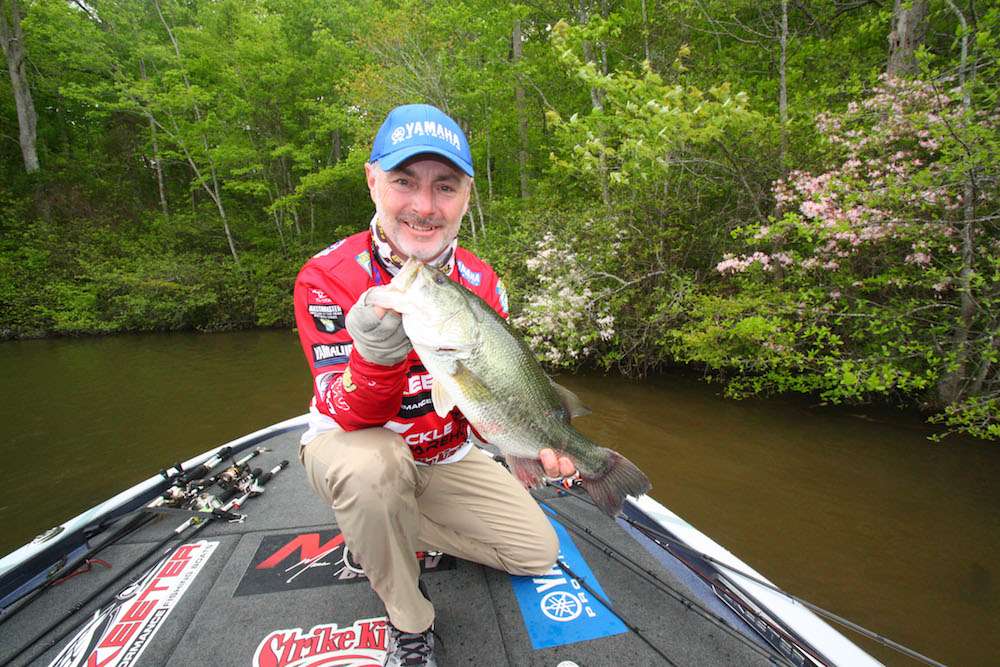
If you’re a fan of tournament bass fishing, chances are that you’ve listened to Elite Series pros talk about how they “followed the bluegill spawn.” While it may seem like an easy pattern, for many weekend anglers the bluegill spawn and its impact on the bass bite is a quandary.
Elite Series pro Mark Menendez intends to dispel some of the mystique surrounding this annual event. “We had a Bassmaster Major at Lake Wylie (N.C.) in which the bluegill spawn played a huge role,” he says.
“It was in July, and typically bluegill will spawn from May until June in most areas of the country. “That week, we had a full moon, so the bluegill spawned again. I spent a lot of time that week fishing offshore and didn’t get a bite. I finally went into a shady pocket to eat a sandwich one day and my boat drifted over a bluegill bed.
There was a pair of 3-pound bass positioned at each end of the bed, just staring at the bluegill.” In instances when you can see bass staked out waiting for a bluegill mistake, the effects of the bluegill spawn are clearly evident. “The pattern is really simple,” Menendez says. “You basically will have bass positioned around spawning beds, waiting for a bluegill to get out of their comfort zone. You’re not going to find a school of bass around these beds. You’re going to find individual bass that are waiting for the easy meal.” Menendez says that bass will position at opposite ends of a bluegill bed as opposed to merely roaming around the shallows.
“You might have three or four bass in an area that are set up watching multiple beds at one time,” he says. “Generally, any topwater offering will work to get the bass to react when they’re positioned like this.” While a topwater is Menendez’ first choice, it’s not the only bait he’ll use during the bluegill spawn. “You need a bait that’s going to cause enough commotion to alert the bass that a bluegill is out of position,” he says. “I like to use a wake-type bait. That will get you some really aggressive strikes.”
Bass focused on bluegill beds, he points out, are extremely territorial and prefer to hang on the shady side of the bed. “If you roll into an area with bluegill beds and see a bass to the left of a bed, chances are it’ll be there tomorrow,” explains the Kentucky pro. “I always try to fish the bed as though I don’t see any bass by fan-casting around the beds, trying to draw the bass into reacting.”
While Menendez points out that the bluegill spawn is often a very dependable pattern, he is quick to explain that, in order for the pattern to remain viable, an angler needs to locate as many bluegill beds as possible. “It’s a very bankable pattern when you’re able to discover it,” he says. “The thing about it is that you’d better have multiple areas because it’s not a one-spot type of deal.”
In cases where the bluegill beds are visible but bass aren’t, particularly if the beds are sloping toward deeper water, Menendez cautions that anglers shouldn’t pass them by. “Just fish the downhill side of the beds with a swimbait,” he says.
“Bass are opportunistic and will pounce on any chance to grab an easy meal. Those bluegill beds are a consistent food source for a week or more, and even when you’re not able to see the bass, chances are that there will be a few close by.”
(Provided by Z3 Media)
Editor’s note: Originally published in 2011




